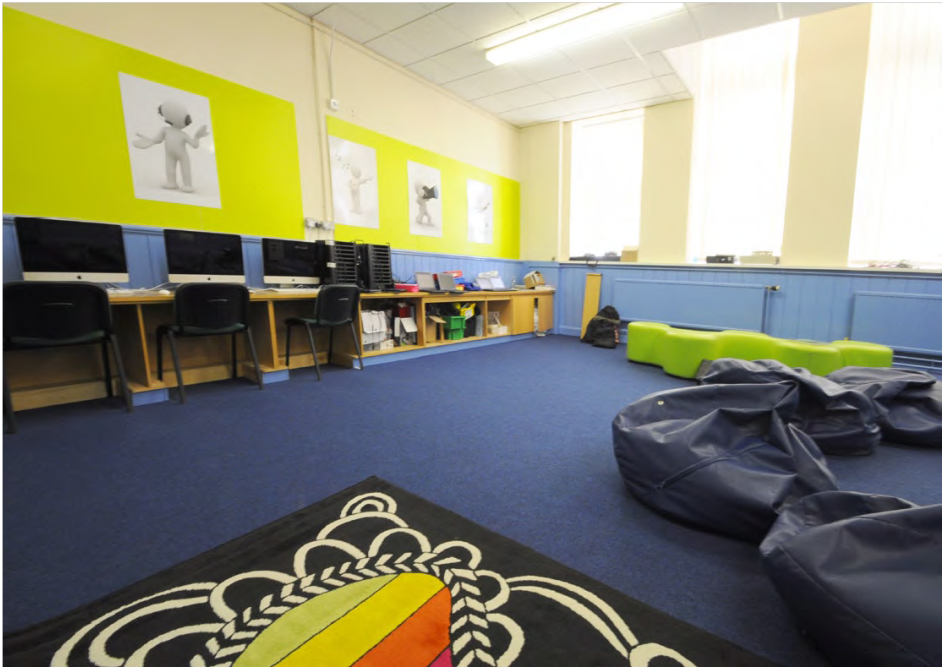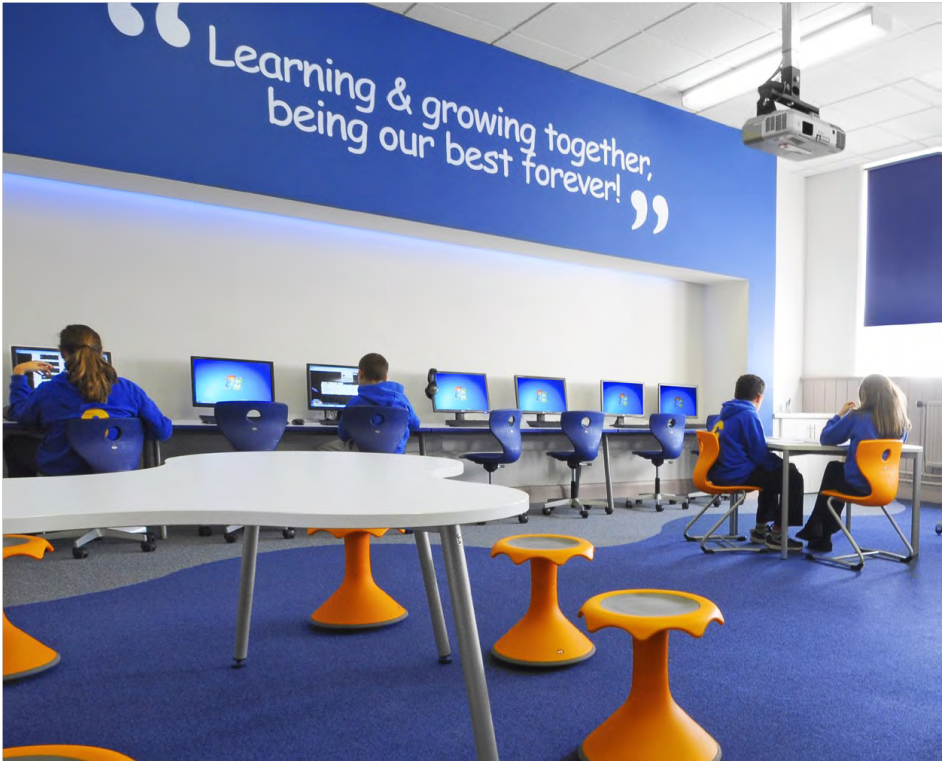
Computing has emerged as one of the most important subjects taught in schools in the 21st century – providing students with the skills and knowledge required to succeed in the computer-centric workplace.
Investment in ICT facilities has risen dramatically in recent years, with schools and colleges struggling to keep pace with the technological requirements of the subject. The environment of a computer suite is different to any other school classroom; from state-of-the-art tech to advanced security solutions, schools must invest heavily if they’re to offer a flexible and effective workspace for students of all ages and abilities to succeed in the subject.
Here, we’ll look at the facilities, services and technologies that make an effective ICT classroom.
Flexible layouts
Given the rapid evolution of computer technologies, computer suites must offer an adaptable and flexible environment for learning. As the subject has developed, teaching styles have had to adapt to emerging tech, establishing a need for flexible classroom design that offers functional space for collaborative and individual learning.
Naturally then, ICT classrooms should be spacious and uncluttered – with ample workspace for individual study. Innova Design Solutions suggest in a recent article that providing quality workstations is of vital importance, deep enough to allow both arms and wrists when typing, and spacious enough for students to easily work on their own or in pairs.
To reduce stress among students and teachers – and to enhance overall health and safety – there should be ample space between desks to provide a comfortable working environment for students and staff. According to a report by BECTa Accessed 2015(British Educational Communications and Technology agency) space should be left at either side of the computer to accommodate left-handed and right-handed staff and pupils, as well as a gap of 1,000mm between workstations for students to work comfortably side by side.
Ergonomic furniture
The health implications associated with ill-fitting workstation furniture are well documented, with businesses across the globe implementing ergonomic desks and seating for their staff. Schools should adopt the same ergonomic fixtures and fittings in ICT suites to prevent muscle strain, eye conditions and associated ailments developing in the classroom.
ICT workstations should be set to the correct height for the age group. To determine whether a desk is at the appropriate height, the eye line should be level with the top of the monitor, whilst the lower arms should align with the horizontal work surface. Beneath the desk, students should be able to place both feet on the ground, with their upper legs parallel to the work surface. Failing to provide a comfortable work area could result in back and neck pain after prolonged computer use.
In terms of seating, schools should provide sturdy and durable chairs with lower back and neck support to prevent injury and strain. Ergonomic wheelie chairs are an excellent choice – providing flexibility, manoeuvrability and lasting comfort.
Secure storage solutions
Schools invest more in ICT facilities than any other subject on the curriculum, with BESA (British Educational Suppliers Association) reporting that schools spend as much as £246.5 million per academic year on technology and communications infrastructure.
With such a volume of expensive technology housed in ICT suites, security is naturally a priority. Sadly, when technology is exposed to hundreds of students, theft, vandalism and damage can occur – making advanced security solutions a necessary evil.
To protect ICT infrastructure from loss or damage, there are a number of security measures that can be implemented to deter vandalism and theft. Secure, lockable cabinets can be used to house costly equipment, whilst bolt-down screens and secure cable management systems can be used to deter would-be thieves.
Cable management
Given the complexity of ICT technologies, suites must be fitted with cable management solutions where appropriate. Any one computer lab may contain miles of computer cables and wiring, and this must be properly managed to provide a safe and organised working environment for staff and students alike.
If implemented correctly, a quality cable management system should render computer cables and associated wiring virtually invisible – aside from those connecting to the monitor, keyboard and mouse. An effective cable management system should keep an ICT lab neat and organised, whilst safeguarding against heat build-up and other health and safety concerns.
There are many cable management solutions on the market, each of which garners different results depending on the volume of wiring. In ICT suites, schools should invest in an under-bench cable management system; this state-of-the-art unit houses cabling unobtrusively beneath each work station – without cables trailing on the floor.
Other considerations
To inspire student progression in the subject, computer suites should be flexible, fun and functional. Schools yet to invest heavily in ICT infrastructure should consider state-of-the-art desk setups – such as collaborative hubs, centre floor pods and versatile seating – as well as contemporary work surfaces, low-maintenance fittings and the use of durable, hard-wearing materials. By maximising the comfort and functionality of the ICT suite, schools will provide an effective platform that students can use to learn, progress and develop.
